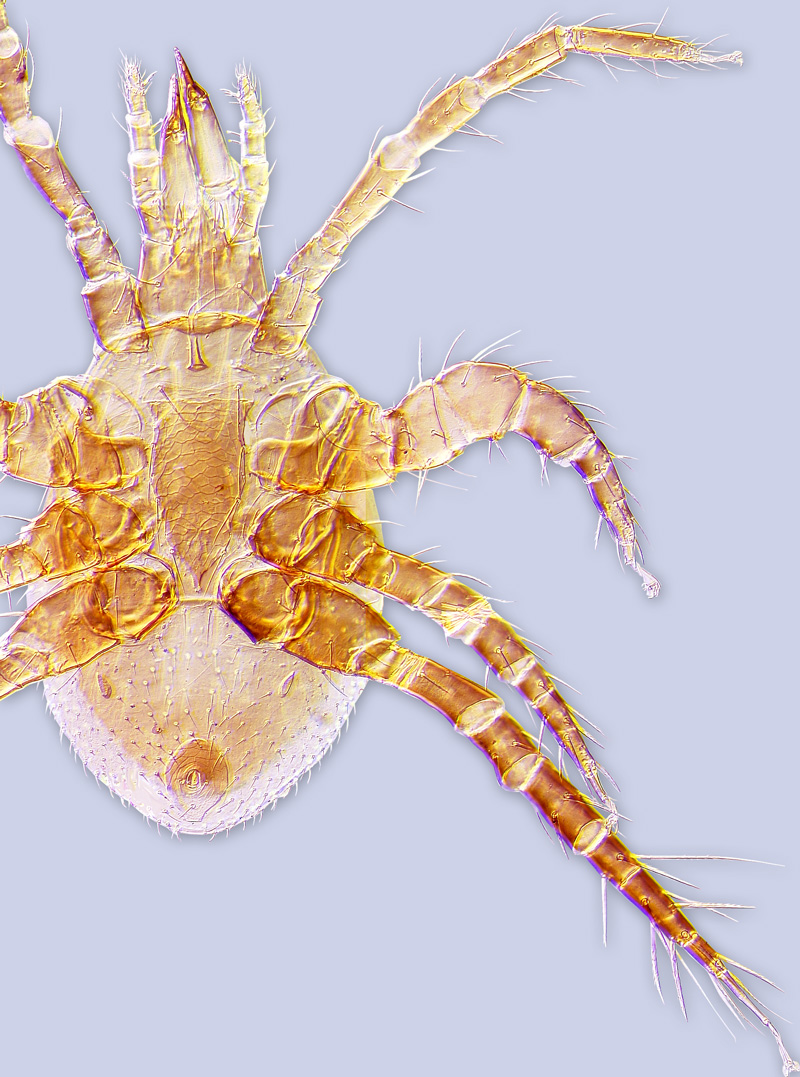Key to some genera of the family Parasitidae found on bees or bee nests
deutonymphs and adults
|
| 1 | Females with entire holodorsal shield. Setae of dorsal hexagon homogeneous (subfamily Pergamasinae). Idiosoma elongate, not rounded. Holodorsal shield of female not fused with ventral shield | |
|
- | Females with 2 dorsal shields, occasionally shields partially fused. Setae z5 may differ from other setae of dorsal hexagon. (subfamily Parasitinae) | |
|
2(1) | Opistogaster with more than 40 pairs of setae | |
|
- | Opistogaster with less than 30 pairs of setae | |
|
3(2) | Setae of dorsal hexagon almost similar in form. Base of male tritosternum never closely associated with genital orifice. (Deutonymphs of a single North American species associated with bees has biramous tectum) ...
|
|
- | Setae of dorsal hexagon different in form, usually setae z5 stout and pilose and j5 and j6 simple. Base of male tritosternum closely associated with genital orifice. Tectum usually triramous | |


